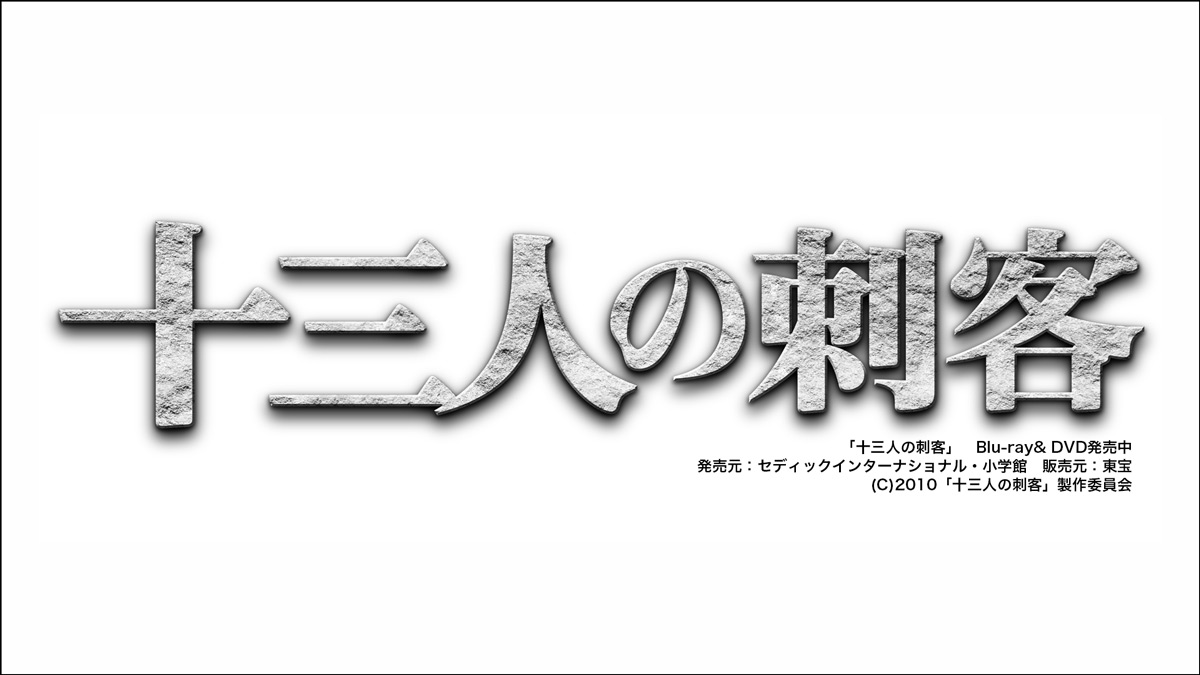
“Thirteen Assassins” Jim Jarmusch was also intoxicated! ? Genealogy of group conflict period dramas
2017.10.12
A cult masterpiece that inherits the spirit of the collective conflict period drama ``Hisatsu!'' Ⅲ
Director Kudo Eiichi became a pioneer of group war period dramas with his 1963 film Thirteen Assassins , but with the slump in Japanese movies he shifted his focus to television dramas in the 1970s. He worked on a variety of genres, from modern works like Scarred Angel to Tuesday Suspense Theatre, but his most famous work is the Hissatsu series, which began in 1972.
The first film in the "Hissatsu Series" was " Hissatsu Shikakenin, " based on the historical novel "Shikakenin" series by Ikenami Shotaro. It is an anti-hero story with the protagonists being "shikakenin," members of the underground business who kill evildoers for money. The script for the first episode was written by Ikegami Kaneo, who also worked on "Thirteen Assassins," and the director was Fukasaku Kinji. Fukasaku, who was busy with " Battles Without Honor and Humanity ," recommended Kudo Eiichi, who also worked on "Thirteen Assassins, " to direct the second film in the series, "Hissatsu Shiokinin."
In the "Hissatsu Series," professionals with various killing techniques secretly eliminate bad guys, but as the series continues, the number of unrealistic killing techniques increases. The most prominent of these are "Shamisen Shop Yuuji (Nakajo Kiyoshi)," who first appeared in " New Hissatsu Shigotonin, " and "Kumihimo Shop Ryu (Kyomoto Masaki)" from " Hissatsu Shigotonin V. " Both are cool, handsome characters with sex appeal who throw shamisen strings or braided cords at their enemies, which then get entangled around their necks and hang them in mid-air. They became popular for their incredible technique, in which the strings and cords fly around without regard for the laws of physics.
However, Eiichi Kudo completely reset the manga-like aesthetic that had become a standard by adopting a "group conflict drama" style. This was the story of the third movie version of " Hissatsu! III: Front or Back " (1986), which was produced in response to the popularity of "Hissatsu Shigotonin".
While the film version brings together the most popular characters from the series, Eiichi Kudo and the production team have broken the conventions of the "Hissatsu Series." At the climax of the film, the assassins are driven into a desperate situation, and one by one they are killed by a large number of assassins on Tsukuda Island in the pouring rain. In such a muddy battlefield, tricky techniques such as elegantly throwing braids are completely useless.
As a result, "Kumihimo Ryu" becomes a decoy and is slain in a humiliating manner. The surviving assassins break into the loan shark's mansion to fight back, but they have no choice but to abandon their trademark weapons and slash, slash, and slash with swords they find. The dramatic climax, in which even the regulars are uncertain as to whether they will survive, is the epic "period drama of group wars." This hidden masterpiece by Kudo Eiichi is reminiscent of the 1963 film "Thirteen Assassins," which blew a hole in the rigidity of period dramas based on tradition and stylized beauty.
The carnage catharsis of “The Great Bodhisattva Pass” was highly praised by Jarmusch.

